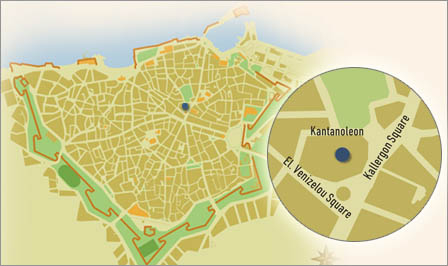After the fall of Chandax to the Turks, the palace passed into the hands of a Turkish official. Documents in the Heraklion Turkish Archive reveal that it was used to house the janissary corps.
An Ottoman inventory dating to 1670 records the palace as a two-storey building, with 2 large chambers, 9 rooms, a cookhouse and 3 apartments on the upper floor, and 22 rooms, a stable, a warehouse, a prison and 3 cisterns on the ground floor. By the large staircase there were a further 19 rooms, 2 drinking fountains, a club, 4 courtyards, 3 wells and 16 shops.
In 1763 Ahmet Kiamil Pasha built 16 small makeshift shops in front of the Ducal Palace. To guarantee their legal status as property and thus restrict the size of the square, these later became vakufs, i.e. dependencies of the neighbourhood mosque - in this case the Basilica of St. Mark, which had been converted into the Defterdar Mosque.



